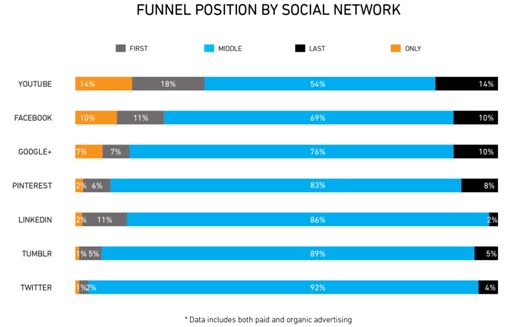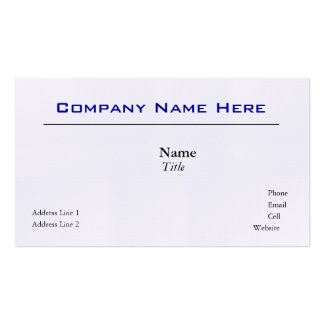Are you eager to convert more prospects into customers? A study released by VentureBeat in September 2014 indicates that YouTube might be the perfect way to attract new customers, get them interested in your products and/or services, and encourage them to make purchases. In fact, of all the top social media platforms, the VentureBeat research puts YouTube at the top of the charts, which might surprise some marketers who are certain that Facebook and Twitter are the keys to success.
The statistical data culled shows that YouTube leads in most areas of customer acquisition. This chart shows the specific breakdown of the results:

The chart focuses on dividing user interactions by first, middle and last sales stages. Those stages are explained as:
- First stage: This is the stage whereby a person is first introduced to an item, whether it’s a service or a product. In a real-life scenario, someone looking for window blinds might put this keyword into their Google search engine. Google would then deliver numerous results, one of which could include a sponsored YouTube video explaining how to measure window blinds. Of course, the sponsor of the video, the window blind manufacturer or seller, would be spotlighted in an attractive position throughout the video. Thus, the customer would not only gain initial awareness of the product, but he or she might also be encouraged to go to the middle stage of the acquisition process.
- Middle stage: At the middle stage of the buying process, the customer who saw the YouTube video on window blinds might begin to see re-targeted advertisements for the company that sponsored the video. Whether those re-targeted ads are for other YouTube videos, or are directing the customer to take another step, they are building awareness of and – hopefully – interest in the window blinds. Consequently, the customer may watch other videos, such as one on picking out the right type of window blind for a certain size window. This stage can also be considered a stage where research is being done.
- Last stage: This is the final stage in the buying process, and it’s a critical one. At this point, the customer will actively start to seek out the product or service. More research will be done, and if all goes well for the seller, a purchase will be made. After all, most customers at this point have done their homework and are ready to buy.
Using the Latest Data to Create a Solid Marketing Plan
With the statistical information at our fingertips, we can begin to cultivate a smarter marketing plan to increase sales of a product or service. By adjusting how we focus on each buying stage, we can urge more buyers to go through the sales funnel.
Let’s say that we are launching a new type of exercise equipment for the home fitness enthusiast. If we want to get the most return on investment for our marketing and PR dollars, we may want to put the most effort into creating sponsored and unsponsored YouTube videos that show the equipment in action. A Google Adwords campaign can help direct people to these videos.
In addition, we can increase our first stage sales cycle numbers by also investing in Facebook and, if applicable, LinkedIn advertisements. Facebook and LinkedIn came in second place in the customer acquisition cycle as charted by VentureBeat; therefore, they may prove to be worthwhile in terms of getting a new product seen by the most people.
When we’re ready to launch the second stage of the sales cycle, we cannot ignore the power of Twitter, Tumblr, LinkedIn and Pinterest. Each of these platforms seems to have a high rate of return for customers who are eager to find out more information about a product. This translates to making certain that we aren’t avoiding these channels. However, the message we are sending should be one that is appropriate for researchers of our product: stats, testimonials, scientific studies, price comparisons, etc.
During the last stage of the sales funnel, we can revert back to mainly focusing on YouTube, with a secondary focus on both Facebook and Google+. Converting interested prospects into full-blown buyers will demand strong call-to-action videos, posts and advertisements. Remember that since the customers have probably decided to buy, they are open to more assertive encouragement. Sales and special deals with limited deadlines are excellent ways to push a viewer into making the commitment.
A Final Word about Customer Stages and YouTube
We should note that not all customers follow the stages as outlined. Some jump from one stage to another; one person may buy at the first stage. Another may start to make a purchase, and then jump back to the middle stage to get better educated. This means that a comprehensive marketing plan has to balance all possibilities.
It should also be said that while YouTube is obviously the strongest player in the game, other social media channels cannot be ignored or simply used on a part-time basis. The trick is to figuring out the right percentage of your marketing budget to spend on each platform in order to get the greatest amount of returns.








No comments:
Post a Comment